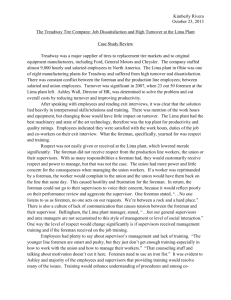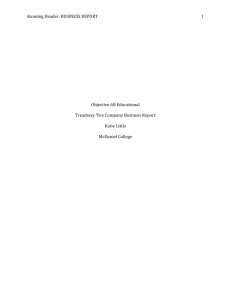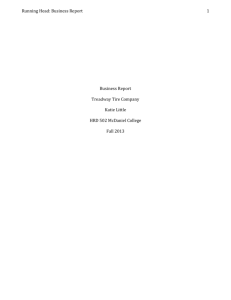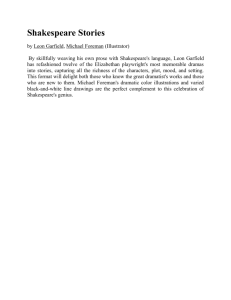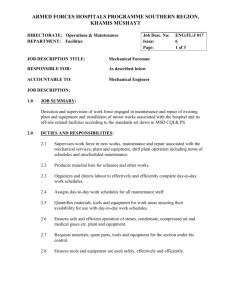objective- 5a- artifact- treadway
advertisement
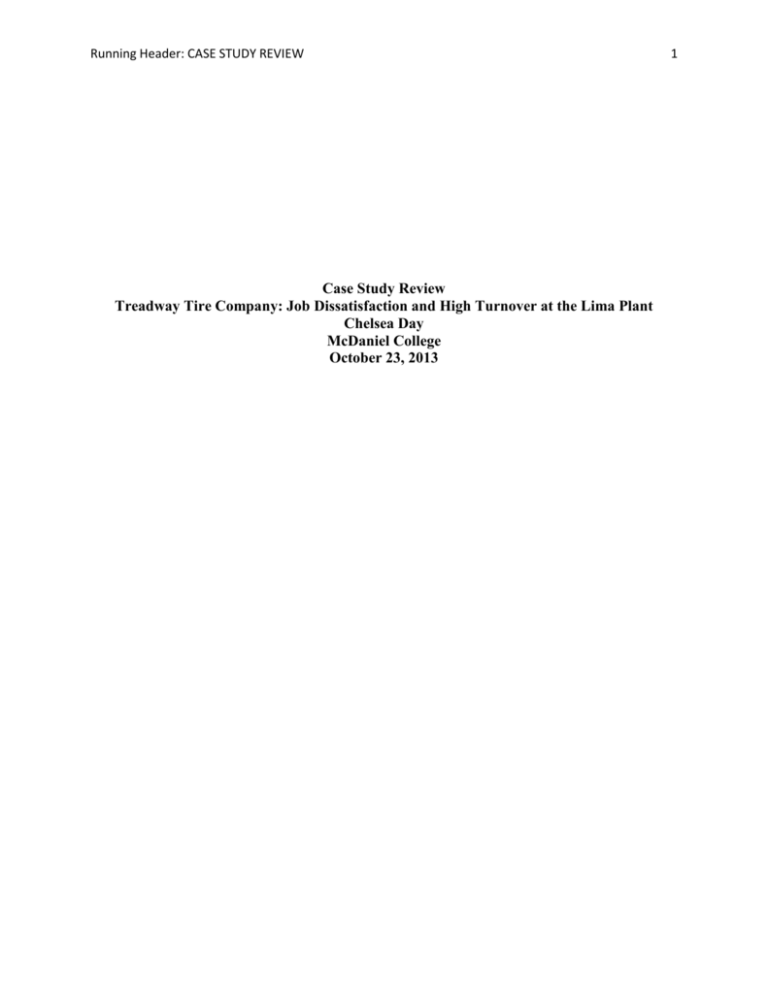
Running Header: CASE STUDY REVIEW Case Study Review Treadway Tire Company: Job Dissatisfaction and High Turnover at the Lima Plant Chelsea Day McDaniel College October 23, 2013 1 Running Header: CASE STUDY REVIEW 2 Background The Treadway tire plant of Lima Ohio was an organization littered with internal and external changes which were impacting its ability to produce at optimum levels. Economic changes such as the rocketing cost of raw materials and shut down of a plant in Greenville North Carolina has both risen the demand of the factory while also steadily increasing the cost, this has led to struggles within the organization to affordable meet their consumer demands. Ashley Wells, the director of HR has tasked herself with an internal problem within the organization, high foreman turnover (Wickham, Beckham and Heather, 2008). Case Study Findings The study revealed a low level of autonomy and morale. The line foremen had a large number of tasks and had very little autonomy. The foremen were subjected to daily reviews and are punished or praised based upon whether they met production levels set by upper management. These standards could be met without a full staff of line workers. These employees are hourly and must work 12 hour shifts, these shifts were established because upper management felt it would save them money by hiring less employees (Wickham, Beckham and Heather, 2008). The line foremen expressed they had difficulty finding employees that they have a high level of absenteeism, without a full that it would have been difficult to meet production standards. The organization put a large number of responsibilities on the line foremen. These individuals were tasked with performing all of the administrative tasks of managing employees and were held accountable for meeting daily performance goals, ensuring all equipment is working before the workday begins, ensuring that they are able to maintain a fully staffed work force and more. The article case study denotes that each of these individual tasks were of a foreman’s “top priority” or “most important duty” (Wickham, Beckham and Heather, 2008). The majority of foreman promotions were internal. While the individuals have the knowledge of the task the organization provided no training to transition individuals from line workers to managers. The “sink or swim” culture the upper management fostered makes it clear why so many of the employees fail in the position (Wickham, Beckham and Heather, 2008). In an organizational culture which a majority of their managers were promote from within it is confusing that their other main source of line foreman are “young graduates from the local college.” The organization seems to recruit from two extremely different pools of applicants, and neither of which seem to have managerial experience or were provided training to gain knowledge of how to be a manager. If individuals who had knowledge and worked within the organization have failed to understand or meet the expectations of upper management it is unclear how they expect an outsider that is provided no onboarding or training to be successful. Impact/ Importance The information this case study provided revealed that the management dilemma of high turnover of the position of line foreman was directly correlated to several other internal problems within the organization. Ashley Wells could create new standards for hiring line foremen or make recommendations but it wouldn’t of solved the root causes of why the organization is Running Header: CASE STUDY REVIEW 3 struggling. In order to solve this dilemma HR needed to systematically address the causes which were causing hire turnover. Recommended Course of Action Ashley Wells needed to implement several changes in order to improve the turnover rate The organization must restructure its working hours. The organizations reasoning behind the 12 hour shifts were that it required hiring less employees thus lower costs. The plant suffered from high absenteeism (Wickham, Beckham and Heather, 2008) . Absenteeism has been recognized as a high organizational cost. The UE Union reports that long work hours also increase the level of stress and hostility. These long hours were contributing to poor relationships between employees and line foreman. Adding another shift may increase costs it would have been countered by lowering the cost of high absenteeism while also increasing morale by easing the work load of the line foreman and the employees. “Employee morale-reduces turnover-cuts down on absenteeism and tardiness.” (Lawler & Porter, 2008). Treadway must streamline some duties and better define their expectations of the position. The line foremen are overwhelmed with tasks. There standards must be consistent and not change on a daily basis. An employee must know its most vital roles in order to organize their time to each task or else no tasks is completed with quality. Using these expectations management must then create a structures performance program to track them over a period of time as opposed to the daily ups and downs line foreman are currently exposed to. A major change that needed to be made within the organization would’ve been to have HR and management work together to create and implement training throughout the organization as well as on boarding hires outside the company. It can be beneficial to hire from both inside and outside the organization but a standard set of procedures must be created. Onboarding is needed if they choose to hire from outside the organization so they can become acclimated to the culture. Standard training needs to be provided throughout all levels of the organization so both employees and management understands its value. It is clear that the culture of the organization didn’t understand the values or purpose of training, it is also clear that there are no set standards (Wickham, Beckham and Heather, 2008). Treadway should invest in the talent it has and provide an avenue for upward mobility. They should strengthen their internal rotation ad cross training program. This is an inexpensive way of increasing an employee’s skills. Cross training increases an employee’s value, increases employee satisfaction, decreasing redundant training and is significantly less expensive than other training programs ( Kolak, 2003). Justification These recommendations are all low cost programs or changes that will help not only improve the high turnover of line foreman but increase employee morale throughout the organization. Employees who feel valued by an organization and feel they can grow will be more dedicated to their organization because they have stake in the outcome of the organizations performance. Unhappy employees are often poor performing. The Treadway case study proved the cost of Low morale is much higher than the money saved on two shifts and no training. Running Header: CASE STUDY REVIEW 4 Bibliography Kolak, J. (2003). Cross-training employees: How to maintain safety while creating a multiskilled workforce. American Society of Safety Engineers, Porter, L. W., & Lawler, E. E. (1968). Managerial attitudes and performances. Homewood, IL: Dorsey Press. Skinner, C. Wickham, & Beckham, Heather. (2008). Treadway Tire Company: Job Dissatisfaction and High Turnover at the Lima Plant. Harvard Business School Cases United Electrical, Radio & Machine Workers of America. (2013). Fatigue and shift work. Retrieved from http://www.ueunion.org/stwd_fatigueshift.html University of Maryland Baltimore. (2010, June). Study reveals widespread fatigue, risk for errors with 12-hour nursing shifts. Retrieved from http://www.medicalnewstoday.com/releases/191236.php


